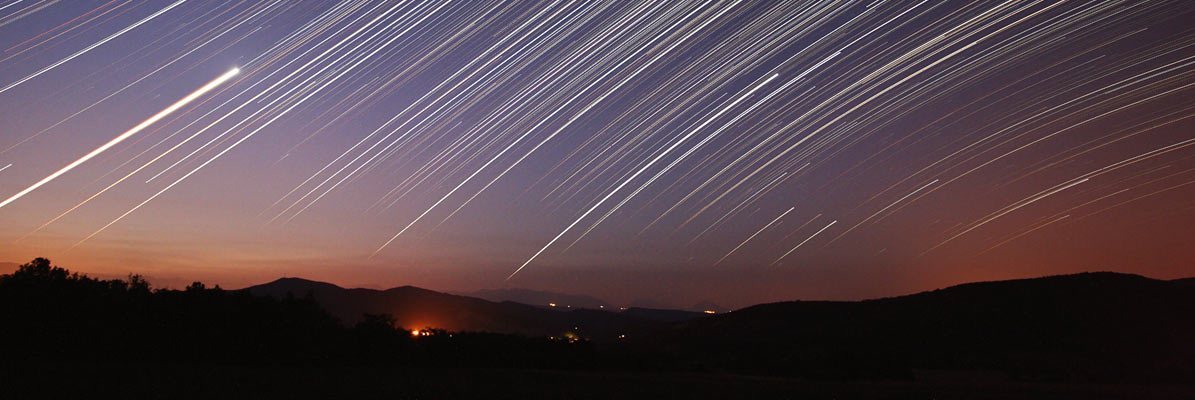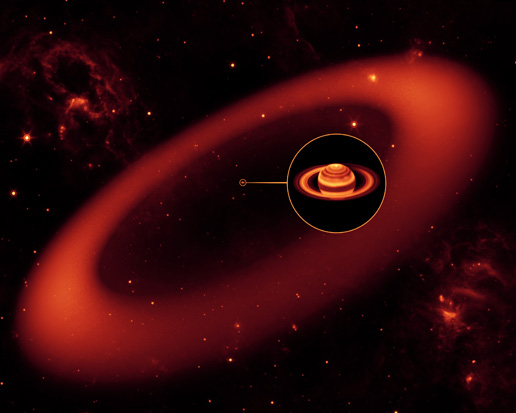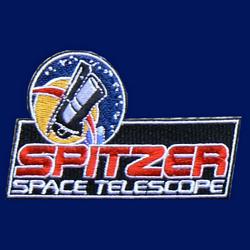
|
Spitzer Discovers a New Ring Around Saturn |
||||||||
|
|||||||||
 |

Mathematics Skill or Topic Area:
Scientific Notation
Next Gen Science Standards ESS1: Earth’s Place in the Universe; PS4: Waves and Their Applications in Technologies for Information Transfer; ETS2: Links Among Engineering, Technology, Science, and Society
Common Core ELA for Science: RST.6-8.2. Determine the central ideas or conclusions of a text; provide an accurate summary of the text distinct from prior knowledge or opinions. RST.6-8.8. Distinguish among facts, reasoned judgment based on research findings, and speculation in a text. RST.6-8.9. Compare and contrast the information gained from experiments, simulations, video, or multimedia sources with that gained from reading a text on the same topic.
Common Core Math Standard: CC.8.EE.4: Perform operations with numbers expressed in scientific notation, including problems where both decimal and scientific notation are used. Use scientific notation and choose units of appropriate size for measurements of very large or very small quantities (e.g., use millimeters per year for seafloor spreading). Interpret scientific notation that has been generated by technology.

Video Engagement: Spitzer’s Warm Mission After more than five years, Spitzer is completing its original assignment to study the cool universe and is now moving on to a new “warm” career (2 minutes). View Program
|
Engage your students with a press release: NASA Space Telescope Discovers Largest Ring Around Saturn
NASA's Spitzer Space Telescope has discovered an enormous ring around Saturn -- by far the largest of the giant planet's many rings.
The new belt lies at the far reaches of the Saturnian system, with an orbit tilted 27 degrees from the main ring plane. The bulk of its material starts about six million kilometers (3.7 million miles) away from the planet and extends outward roughly another 12 million kilometers (7.4 million miles). One of Saturn's farthest moons, Phoebe, circles within the newfound ring, and is likely the source of its material.
Saturn's newest halo is thick, too -- its vertical height is about 20 times the diameter of the planet. It would take about one billion Earths stacked together to fill the ring.
The ring itself is tenuous, made up of a thin array of ice and dust particles. Spitzer's infrared eyes were able to spot the glow of the band's cool dust. The telescope, launched in 2003, is currently 107 million kilometers (66 million miles) from Earth in orbit around the sun.
Saturn's newest addition could explain how Cassini Regio came to be. The ring is circling in the same direction as Phoebe, while Iapetus, the other rings and most of Saturn's moons are all going the opposite way. According to the scientists, some of the dark and dusty material from the outer ring moves inward toward Iapetus, slamming the icy moon like bugs on a windshield.
"Astronomers have long suspected that there is a connection between Saturn's outer moon Phoebe and the dark material on Iapetus," said Hamilton. "This new ring provides convincing evidence of that relationship."
The ring would be difficult to see with visible-light telescopes. Its particles are diffuse and may even extend beyond the bulk of the ring material all the way in to Saturn and all the way out to interplanetary space. The relatively small numbers of particles in the ring wouldn't reflect much visible light, especially out at Saturn where sunlight is weak.
"The particles are so far apart that if you were to stand in the ring, you wouldn't even know it," said Verbiscer.
Spitzer was able to sense the glow of the cool dust, which is only about 80 Kelvin (minus 316 degrees Fahrenheit). Cool objects shine with infrared, or thermal radiation; for example, even a cup of ice cream is blazing with infrared light. "By focusing on the glow of the ring's cool dust, Spitzer made it easy to find," said Verbiscer.
Press release date line - October 6, 2009 Press release
location: [
Click Here ] |
|
Explore math connections with SpaceMath@NASA
Problem I -
How Much Mass is there in a Single Grain of Dust? -
Interplanetary and interstellar space contains gas and dust which form a dilute medium through which planets and stars move. Although there are few of these gas and dust particles in any
cubic meter of space, the volume of space is so large that the total mass in gas and dust can be substantial. In this problem, students explore the masses of
various types of dust grains in space.
[ Open
PDF ]
Problem II -
The Light from a Warm Dust Grain -
Dust grains can be detected by the light that they emit in the infrared spectrum. Because they are warm, they emit infrared 'heat'
radiation, which sensitive telescopes can detect across great distances. In this problem, students compare the 'wattage' of a dust grain
with the wattage from a 60-watt reading light in their home. [Open
PDF ]
Explain
your thinking: Write
your own problem - Using information
found in the Math Connection problems, the press release or the video
program, create your own math problem. Explain why you set the problem up this
way, and how you might find its answer.
Evaluate
your understanding: Challenge Problem: The Volume of Saturn's New Dust Ring
- Students use the equation for the volume of a torus (a donut shape) along with the dimensions of the new dust ring
of Saturn determined by the Spitzer Space Telescope, to calculate the volume of the dust ring and compare it to the volume of Earth.
[Open
PDF ]
More problems using Scientific Notation:
Scientific Notation I: Conversions from Decimals [Open PDF] Scientific Notation II: Addition [Open PDF] Scientific Notation III: Division and Multiplication [Open PDF] Scientific Notation IV: Word Problems [Open PDF]

NASA / JPL
3-D Solar System
Extend your new knowledge - Visit Saturn and learn about the scale of Saturn's satellite system by measuring distances and working with scientific notation. [ Open PDF ]